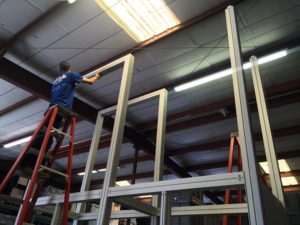Montreal has been on an upward spiral, amassing more and more infrastructures with each passing year. Included in this is The Turcot Interchange which is a key roadway connector between Montreal-Pierre-Elliott Trudeau International Airport and downtown Montréal. Additionally, there are several projects in progress to rehabilitate the sewer system. Because of the steady construction of buildings, the city has experienced a surge of uninvited guests- namely rats. Being displaced from the comforts of their usual routine, they have collectively sought higher ground. All of the commotion that comes along with construction has given them their marching orders right into the neighborhood’s residential homes or other protective hiding places. It’s not entirely uncommon for cities going through expansive construction, complete with digging and noise, to incur a rat problem. A problem can also occur due to warmer temperatures, such as in Montreal last spring.
But not to worry! There are a few stumbling blocks you can put in place to create an unwelcoming environment for the rodents. Homeowners and businesses can keep wood or other stacks of compiled materials away from the foundation and wall structure of your home or building. Also, be sure that food and waste are kept locked away from view. Out of sight, out of mind is a good rule of thumb in this instance. Interestingly, rats will go to great lengths for food and shelter. Because of this, they have occasionally found their way into sewer systems and even toilets! A typical home has multiple stack pipes running from the sewer through the roof that vents sewer gasses. These connect to the home’s drain system which empties water used by the dishwasher, in showers and when flushing toilets. This quandary has been noted- and more feasible- in older, larger sewer systems which allow for plenty of room to scurry up or down a pipeline with ease.
Montreal, did you know? The city-owned portion of lead laterals will be replaced within the next ten years. Thousands of pipelines have already been replaced. Of the remaining, 50,000 will be individual lead line replacements and 10,000 will be done as part of larger projects. The homes which were singled out for replacement contained lead levels which did not meet the revised standard.


